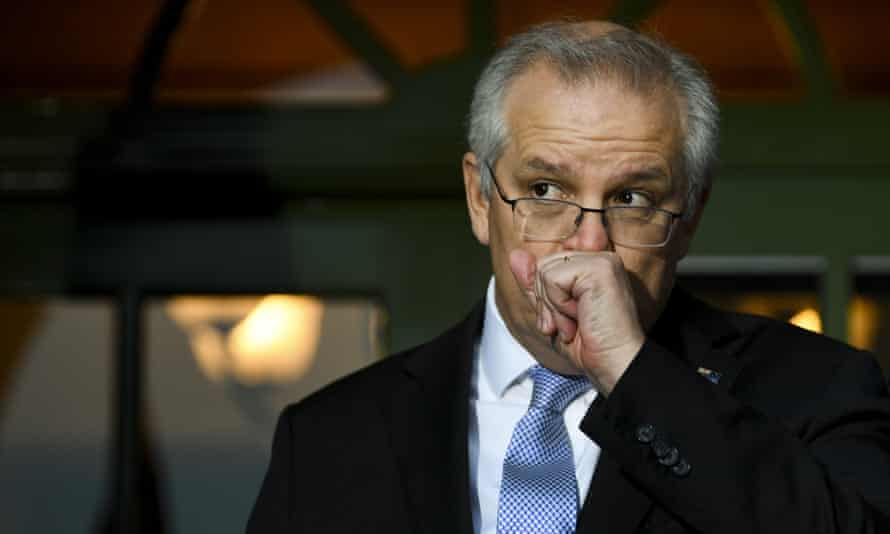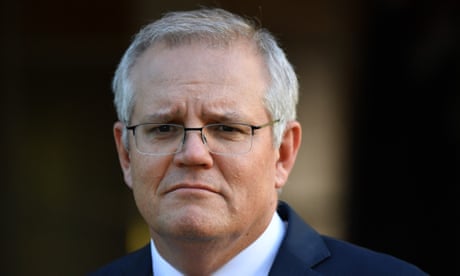Extract from The Guardian
If Scott Morrison is inclined to execute the pivot he’s spent months telegraphing – towards net zero by 2050 – a report out this week contains some helpful fodder

Last modified on Sat 24 Jul 2021 09.16 AEST
With 14 million people in lockdown and the news in Sydney going from bad to worse, and with Scott Morrison steadfastly avoiding an apology for moving too slowly on vaccinations until the moment the word sorry crossed his lips, all eyes were on the pandemic.
This was a week where any other interesting insights sank like a stone, so let’s clear some space for one of the lost insights.
On Tuesday, the group Beyond Zero Emissions released a report based on economic analysis from ACIL Allen. This work found that establishing renewable energy industrial precincts in two Australian regions would create 45,000 new jobs and generate revenue of $13bn a year by 2032. The two regions the report identified were the Hunter in New South Wales and Gladstone in central Queensland. If you follow politics closely, you’ll know these regions will be heavily contested at the next federal election.
In the world envisaged by this report, dedicated renewable energy zones would support energy intensive businesses during the transition to low emissions. I might need to repeat that sentence because the Coalition has spent more than a decade telling Australians that renewables and heavy industry are fundamentally incompatible.
The report says a renewable precinct in the Hunter could unlock new capital investment of $28bn in the region, including $8.6bn for storage/firming capacity, as well as transmission lines, freight networks and renewable hydrogen infrastructure and export facilities. There is an aluminium smelter in the Hunter, which the report notes will need 800-900 megawatts of firmed energy.
In Gladstone, which has Australia’s second largest aluminium smelter (at Boyne Island), the analysis points to new manufacturing activities attracting additional capital investment of $7.8bn to the region, including $1.7bn for key infrastructure such as storage and firming facilities.
If Morrison is inclined to execute the pivot he’s spent months telegraphing – the creep towards a net zero commitment by 2050 – this week’s report contains some helpful fodder. Forecasting the future is always a function of inputs and outputs, with a heavy overlay of uncertainty. But drilling into the opportunities for two industrialised regions that sit on the frontline of Australia’s deranged carbon wars marks a welcome break from the weaponised hyper-partisan windbaggery about the costs of the transition.
Perhaps it is, but Morrison has not folded the tent.
Before Joyce ran down Michael McCormack, generic discussions had begun in the relevant cabinet sub-committee about the direction Morrison wanted to go. But people insist there was no specific proposal on the table, and no decisions were made at that time. The current talk around the government is four different options are being worked up with a view to getting the Nationals on board – options informed by obvious organising questions, like what can we say on longer term targets? Is agriculture in or out? What do you do with methane?
The ambition remains having something concrete to say at the Cop26 in Glasgow in November. But before anyone gets to Glasgow, the government first has to square its own circle. Having spent a decade framing emissions reduction in apocalyptic terms, the Coalition now has to present different facts. It has to present a transition plan where transition looks more like an opportunity than armageddon.
Senior players believe that Joyce is open to a deal on net zero (despite his daily word salad, which rollercoasters from nick-off mate to maxims and reflections on menu pricing). Lest this sound like rash optimism, history furnishes a precedent.
It’s long forgotten now, but Joyce was actually disciplined in a policy sense during the period when Malcolm Turnbull tried to get sign-off on the national energy guarantee. Turnbull’s problem during the Neg crusade, predominantly, was in the Liberal party room, not so much with the Nationals. That’s one of the reasons Joyce felt bruised after Turnbull turned on him forcefully once the deputy prime minister’s private travails exploded in the public domain. Joyce felt he’d been a good soldier on a tough assignment.
After that conscious uncoupling, Joyce, sitting mulishly on the backbench, reverted to his meandering populism. It will be genuinely fascinating to see what he does now, with the full responsibility of Coalitionism resting once again on his shoulders.
Joyce’s party room is split. Some will support signing on to net zero at a price. Other colleagues are hard noes, and the hard noes will not be persuaded by modelling that says coal and gas workers can transition to be hydrogen producers, or wind turbine manufacturers. If Joyce ultimately chooses deal rather than no deal, we can expect the hand grenades to come out.
These are difficult times for the Coalition. The coming election was supposed to be framed by a booming economy, and underpinned by exceptionalism when it came to the management of the pandemic. But the emergence of the Delta strain has punctured a significant hole in that plan.

Government MPs say, right at the moment, it is bad on the ground – as bad as the opinion polls suggest. Voters are angry about the slow pace of the vaccination rollout, and they are also articulating doubts about Morrison. When you talk to MPs you get the same situation report: the mob has moved, we are behind, particularly with younger voters; if the Pfizer turns up, it’s possible we can pull out of this downdraught and reap the benefits of incumbency, but it’s not clear whether there’s enough time to shift people back.
When it comes to climate and energy policy, Labor has its own difficult internal debates to land. But Anthony Albanese isn’t letting any grass grow under his feet. Unburdened by the ceaseless requirements of governing, and thus far, one step ahead of quarantining restrictions – the Labor leader has been running a faux campaign, pinging between Tasmania and Queensland, going to pubs and cafes and worksites, trying to connect with the voters who abandoned Labor in 2019.
Labor strategists report the reception on the ground in Queensland is better than it has been for some time, and noticeably better than 2019. Albanese isn’t being peppered by questions about the future of coal in central Queensland anymore. The culture wars of the Adani election are, of course, dangerous and ever-present – but right now, the issues don’t feel as resonant as they did even 12 months ago.
Camp Albanese knows the Coalition has a big electoral buffer in Queensland because of the significant positive swings in 2019. People also know the positive reception sits at the point of voters working out whether Labor can be trusted rather than expressions of rapture. But as the government grinds through a tough winter, in Camp Albanese, the current mood is bending toward optimism.
No comments:
Post a Comment